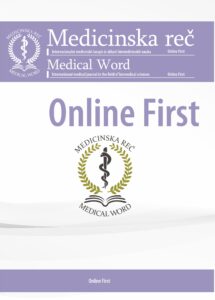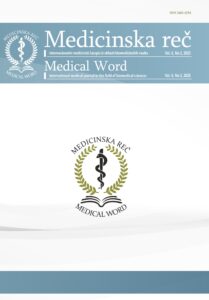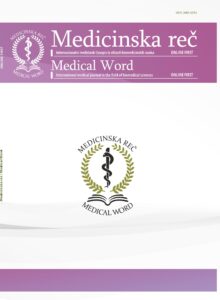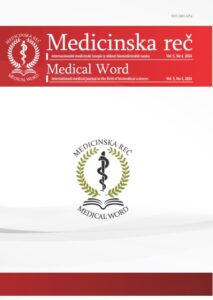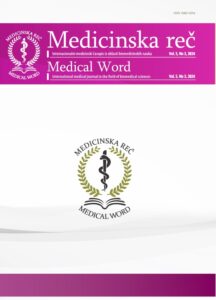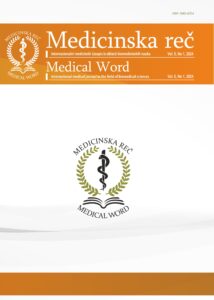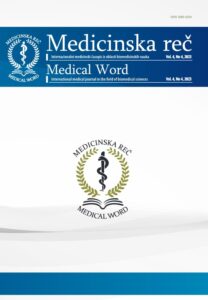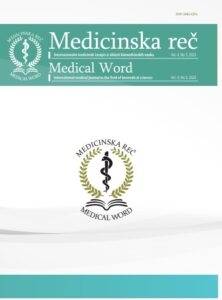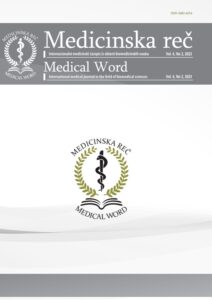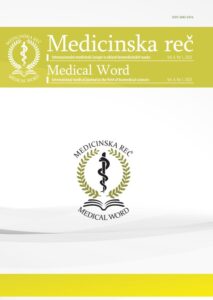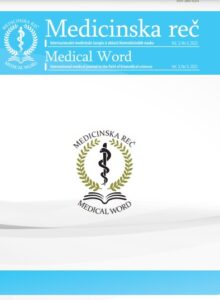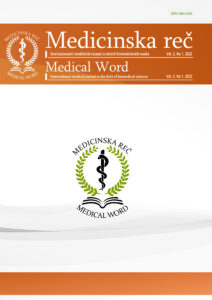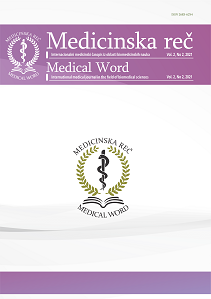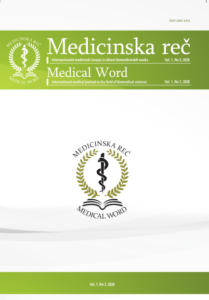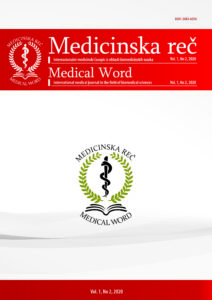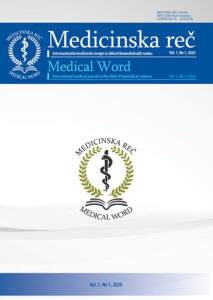Dehydration in children in the mountain – causes and practical advice
Original article
Miloš Gostimirović, Jovana Rajković, Ljiljana Gojković Bukarica
123–129
https://doi.org/10.5937/medrec2404123G
Abstract
Being in nature and numerous beneficial effects on health and disease prevention make hiking a physical activity recommended for all ages. However, this activity is not without absolute risk to health, considering that vast majority of mountaineering activities are organized at altitudes over 2000 m above sea level (highland), which can last for several days. In that case, risks caused by potentially inadequate psychophysical and ambient conditions (e.g. sprained joints, insect bites, frostbite/heat stroke, acute altitude sickness,…) must be considered, but also a dehydratation, especially in summertime. As a result of dehydration, serious health disorders can occur, which sometimes require immediate professional intervention. Therefore, it is recommended for every mountaineer who attend a physically and/or technically demanding mountaineering action, to know about the amount of water, its intake rate and factors that increase the need for water, as well as the general physiology and regulation of body fluids. More often, we see the youngest (even young infants) at the high-mountain activities, especially during the summer. The inclusion of children in mountaineering is affirmative, but it is also known that they are at greater risk for acute health disorders comparing to adults, including dehydration. The aim of this article is to give a general overview of the body fluids and provide useful practical tips for preventing dehydration of the youngest on the mountain, in order to fully express the psychophysical benefits of hiking, both for the child and for the parents.
Key words: mountaineering, pediatric population, dehydration, practical advices
Literatura
- Popkin BM, D’Anci KE, Rosenberg IH. Water, hydration, and health. Nutr Rev 2010;68(8):439-58.
- The Royal Children’s Hospital Melbourne. Dehydration. (Official Website). Available online: https://www.rch.org.au/kidsinfo/fact_sheets/Dehydration/ (accessed on 15 July 2024)
- Australian Government, Department of Health and Aged Care. The importance of Drinking water. (Official Website). Available online: https://www.health.gov.au/resources/publications/the-importance-of-drinking-water?language=en (accessed on 15 July 2024).
- Australian Government, Australian dietary guidelines. Nutrient Reference Values. Water. (Official Website). Available online: https://www.eatforhealth.gov.au/ (accessed on 15 July 2024).
- NSW Health. Water as a drink. (Official Website). Available online: https://www.health.nsw.gov.au/environment/water/Pages/drinking-water.aspx (accessed on 15 July 2024).
- National Academies of Sciences, Engineering, and Medicine; Health and Medicine Division; Food and Nutrition Board; Committee to Review the Dietary Reference Intakes for Sodium and Potassium. Dietary Reference Intakes for Sodium and Potassium. Oria M, Harrison M, Stallings VA, editors. Washington (DC): National Academies Press (US); 2019 Mar 5.
- Chouraqui JP. Children’s water intake and hydration: a public health issue. Nutr Rev 2023;81(5):610-24.
- Verbalis JG. Disorders of body water homeostasis. Best Pract Res Clin Endocrinol Metab 2003;17(4):471-503.
- Sawka MN, Latzka WA, Matott RP, Montain SJ. Hydration effects on temperature regulation. Int J Sports Med 1998;19(Suppl 2):S108-10.
- Daley SF, Avva U. Pediatric Dehydration. [Updated 2024 Jun 8]. In: StatPearls [Internet]. Treasure Island (FL): StatPearls Publishing; 2025 Jan Available from: https://www.ncbi.nlm.nih.gov/books/NBK436022/
- Lu H, Ayers E, Patel P, Mattoo TK. Body water percentage from childhood to old age. Kidney Res Clin Pract 2023;42(3): 340-8.
- Bogdanović R, Radlović N. Pedijatrija, udžbenik za poslediplomsko usavršavanje lekara (poglavlja Ishrana i metabolizam vode). Beograd: Akademska misao; 2023. ISBN: 978-86-7466-590-9.
- Mardešić D. i suradnici. Pedijatrija. 8. dopunjeno izdanje (poglavlje Promet telesnih tečnosti). Zagreb: Školska knjiga; 2016. ISBN: 978-953-0-31592-1.
- Nelson WE. Nelson Textbook of Pediatrics. 21st Edition. Elsevier: Amsterdam; 2019.
- Colletti JE, Brown KM, Sharieff GQ, Barata IA, Ishimine P. The management of children with gastroenteritis and dehydration in the emergency department. J Emerg Med 2010;38(5):686-98.
- Dawlett M, Gonzalez A. Fluid and Electrolyte Therapy. A Chapter in Core Concepts of Pediatrics, 2nd Edition, 2021.
- Garcia-Garcia D. Health Promotion and Hydration: A Systematic Review About Hydration Care. Florence Nightingale J Nurs 2022;30(3):310-21.
- National Collaborating Centre for Women’s and Children’s Health (UK). Diarrhoea and Vomiting Caused by Gastroenteritis: Diagnosis, Assessment and Management in Children Younger than 5 Years. London: RCOG Press; 2009.
- Vilmundardóttir VK, Skúladóttir SS. Preventing and Managing Hydration and Dehydration in Older People. In: Geirsdóttir ÓG, Bell JJ, editors. Interdisciplinary Nutritional Management and Care for Older Adults: An Evidence-Based Practical Guide for Nurses. Cham: Springer International Publishing; 2021. p. 87-98.
- Kight BP, Waseem M. Pediatric Fluid Management. [Updated 2023 Feb 28]. In: StatPearls [Internet]. Treasure Island (FL): StatPearls Publishing; 2025 Jan-. Available from: https://www.ncbi.nlm.nih.gov/sites/books/NBK560540/.


